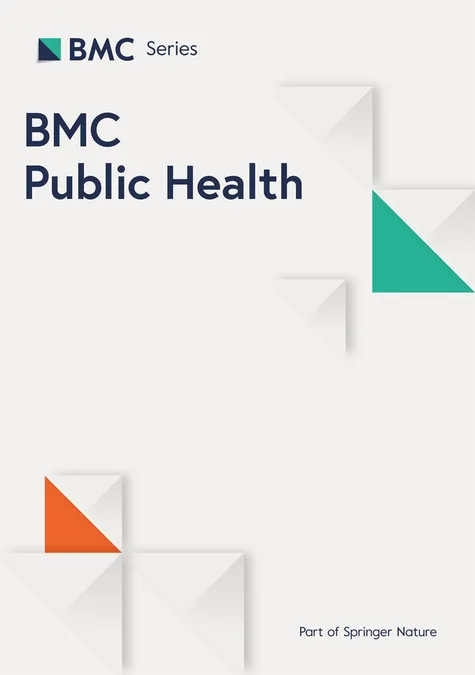
Alarming Rise of Sedative-Hypnotic Use Among Young Adults in Taiwan: Insights from 2014 to 2018 Survey Data
2024-11-25
Author: Wei
Introduction
In recent years, the use of sedative-hypnotics—medications primarily prescribed for anxiety and insomnia—has raised significant health concerns, especially in Taiwan. A comprehensive analysis of national surveys conducted in 2014 and 2018 reveals crucial trends that may impact public health policy.
Understanding Sedative-Hypnotics
Sedative-hypnotics, which include benzodiazepines (BZDs) and Z-drugs, work by enhancing the effects of the neurotransmitter GABA to induce sleep or alleviate tension. While BZDs have been utilized since the 1960s, Z-drugs emerged as safer alternatives in the 1990s. However, despite their perceived safety, Z-drugs have recently been linked to risks of misuse and driving impairments.
Global Trends and Local Concerns
The global landscape regarding sedative-hypnotic use indicates a troubling increase. Data from the U.S., Canada, and Sweden highlight growing concerns about dependence, overdose, and accidents stemming from sedative-hypnotic prescriptions. Alarmingly, a similar pattern is unfolding in Taiwan, where the prevalence of sedative-hypnotic usage has been steadily rising.
Survey Findings
An evaluation of survey data shows that the overall prevalence of past-year sedative-hypnotic use remained relatively stable at 5.46% in 2014 and slightly declined to 5.23% in 2018. Yet, the most notable revelation is the increasing usage trend among adolescents and young adult females. The data showed that adolescent use leaped from 0.42% to 0.80% over the four years, raising red flags about the susceptibility of Taiwanese youth to prescription medication misuse.
Demographic Insights
Moreover, young adult females exhibited a significant rise in usage from 2.91% in 2014 to 3.81% in 2018, suggesting differing societal pressures or access to these medications when compared to their male counterparts.
Nonmedical Use Trends
In terms of nonmedical use, which refers to using sedative-hypnotics without proper prescriptions, patterns intensified particularly among adolescents and middle-aged women. The findings indicate a critical need for targeted preventive interventions to address these demographic trends.
Regulatory Effects
Interestingly, while the total use of BZDs increased, there was a marked decline in the use of Z-drugs, suggesting that regulatory efforts and warnings regarding their risks—like sleep-driving—have been effective to some extent.
Sources of Nonmedical Use
The surveys also revealed significant shifts in the sources of nonmedical use. While fewer individuals obtained sedative-hypnotics from pharmacies or doctors, there's been a dramatic rise in acquiring them from friends and relatives—an alarming trend often termed as “social supply.” The motive behind nonmedical use was predominantly self-medication, underscoring the urgent need for educational programs emphasizing the risks associated with unsupervised medication use.
Policy Implications
With Taiwan's relatively relaxed drug policies since the implementation of the National Health Insurance system, the demand for sedative-hypnotics has surged, indicating possible inadequacies in the current regulatory framework. Notably, new restrictions put in place since 2012 did not seem to mitigate the increase in usage among specific vulnerable groups.
Conclusion
As Taiwan contends with rising sedative-hypnotic use, especially among young adults, there is an urgent call for a more comprehensive approach to drug awareness and access. Policymakers must focus on educational outreach that addresses the special needs of adolescents and women and develop alternatives to pharmacotherapy. Creating robust frameworks aimed at preventing misuse while ensuring proper access for those in genuine need is imperative as Taiwan navigates its evolving public health landscape.
In Summary: Health Implications and Future Directions
The trends elucidated by these national surveys underscore a growing public health crisis regarding sedative-hypnotics in Taiwan. Immediate action is required to proactively address and monitor this use, safeguard youth, and protect the overall community from the potential fallout of expanding prescription drug use. With future surveys poised to provide further insights, stakeholders should remain vigilant in their efforts to adapt regulations and educational initiatives accordingly.

 Brasil (PT)
Brasil (PT)
 Canada (EN)
Canada (EN)
 Chile (ES)
Chile (ES)
 Česko (CS)
Česko (CS)
 대한민국 (KO)
대한민국 (KO)
 España (ES)
España (ES)
 France (FR)
France (FR)
 Hong Kong (EN)
Hong Kong (EN)
 Italia (IT)
Italia (IT)
 日本 (JA)
日本 (JA)
 Magyarország (HU)
Magyarország (HU)
 Norge (NO)
Norge (NO)
 Polska (PL)
Polska (PL)
 Schweiz (DE)
Schweiz (DE)
 Singapore (EN)
Singapore (EN)
 Sverige (SV)
Sverige (SV)
 Suomi (FI)
Suomi (FI)
 Türkiye (TR)
Türkiye (TR)
 الإمارات العربية المتحدة (AR)
الإمارات العربية المتحدة (AR)